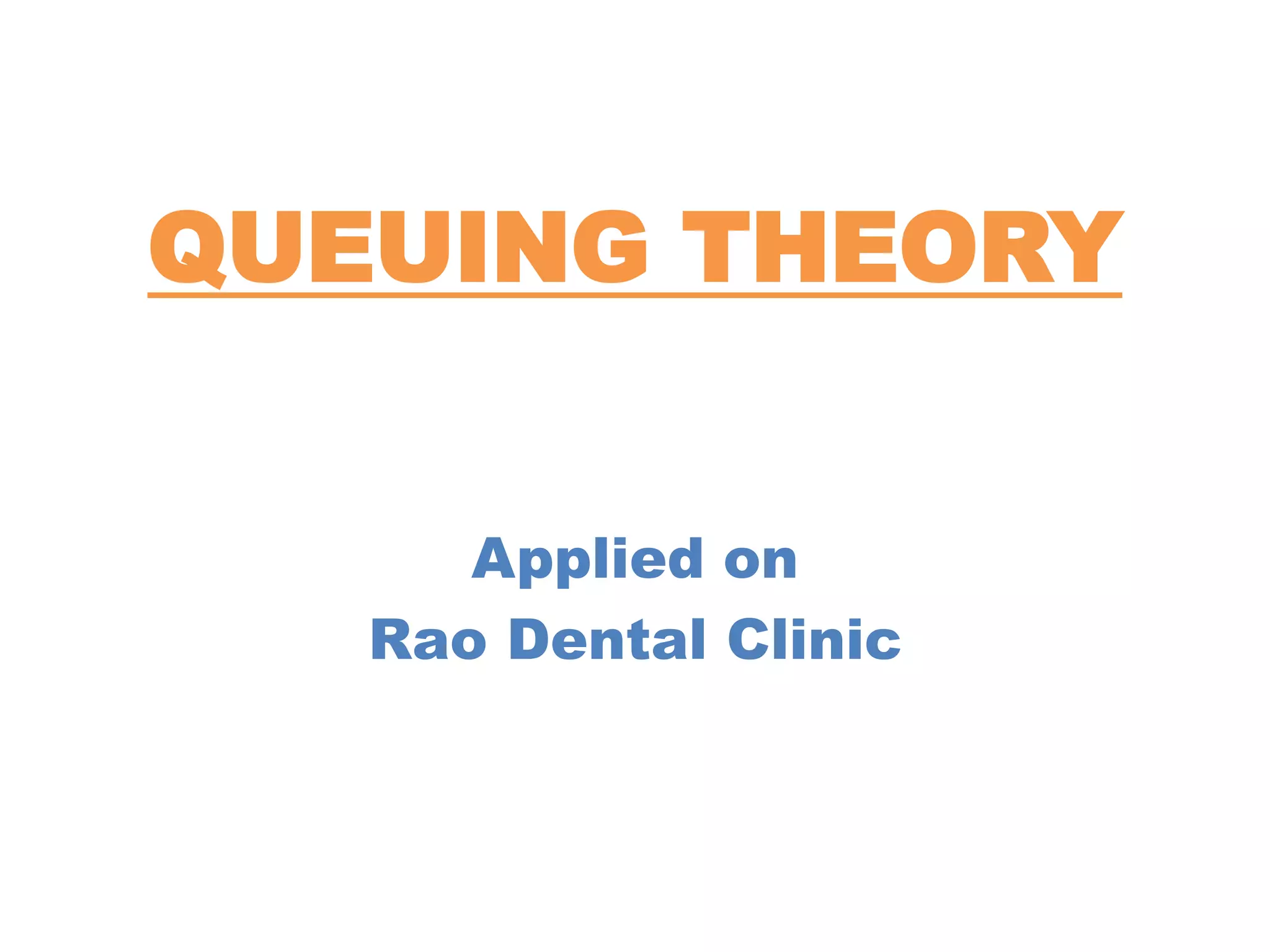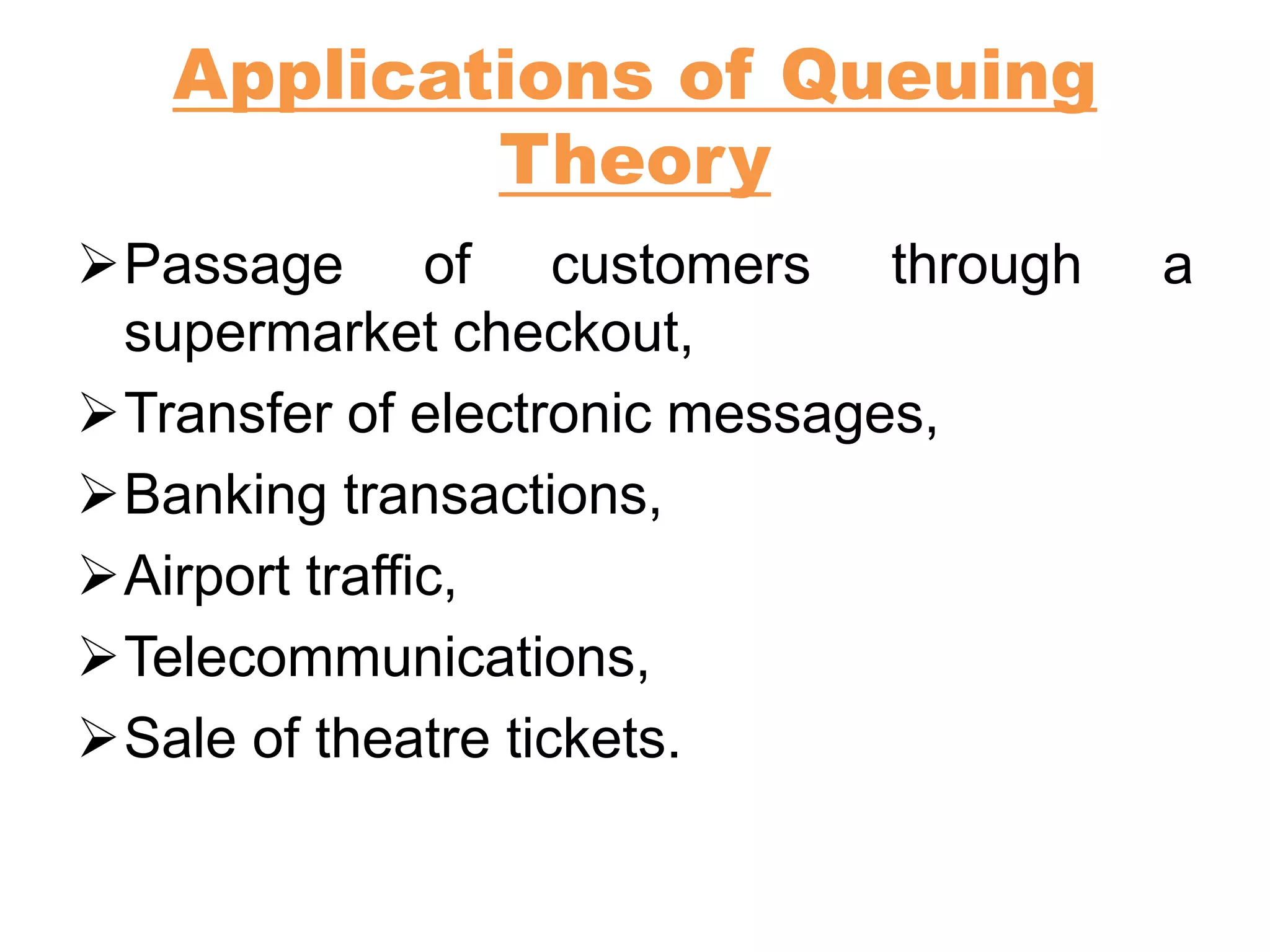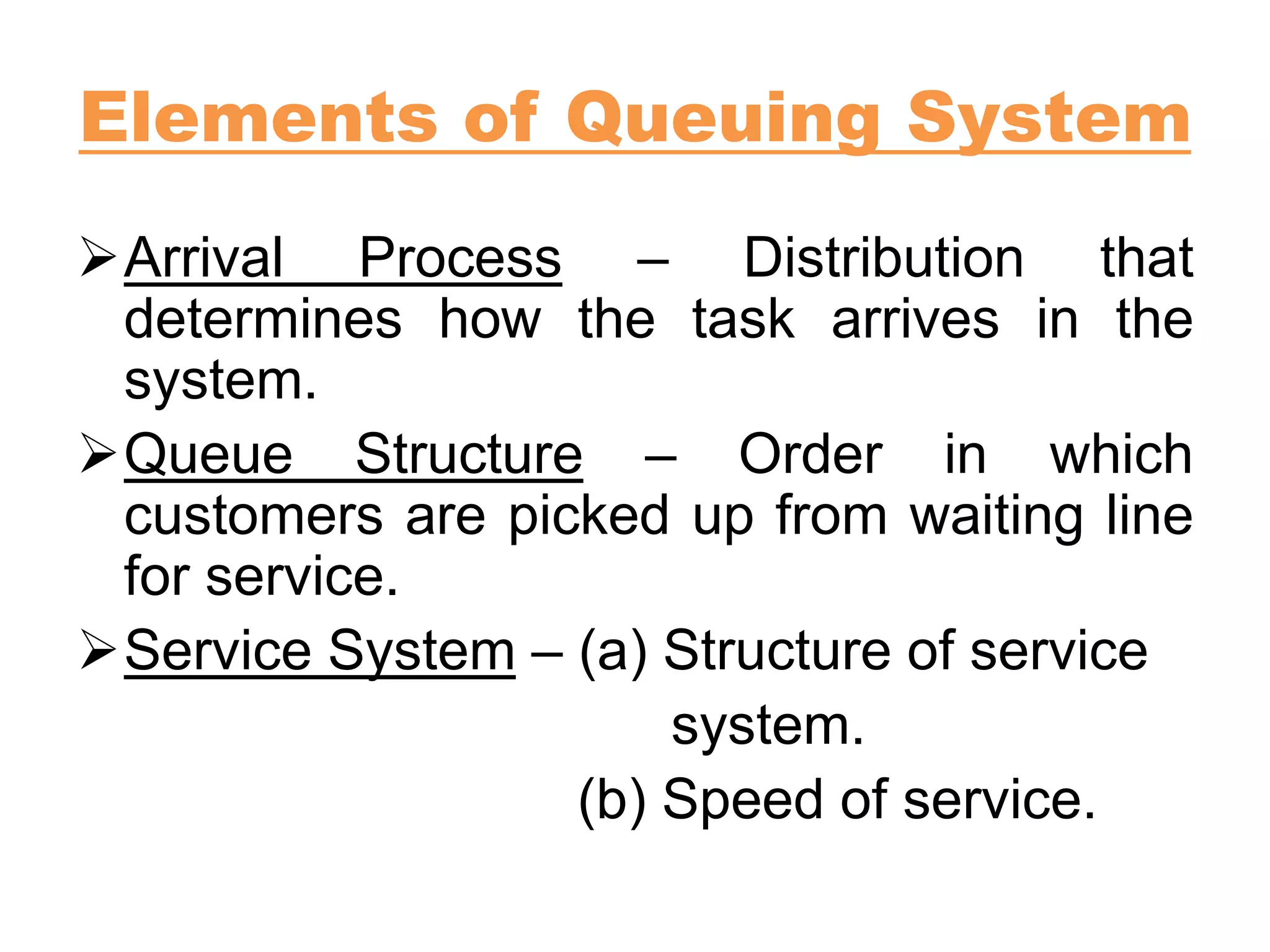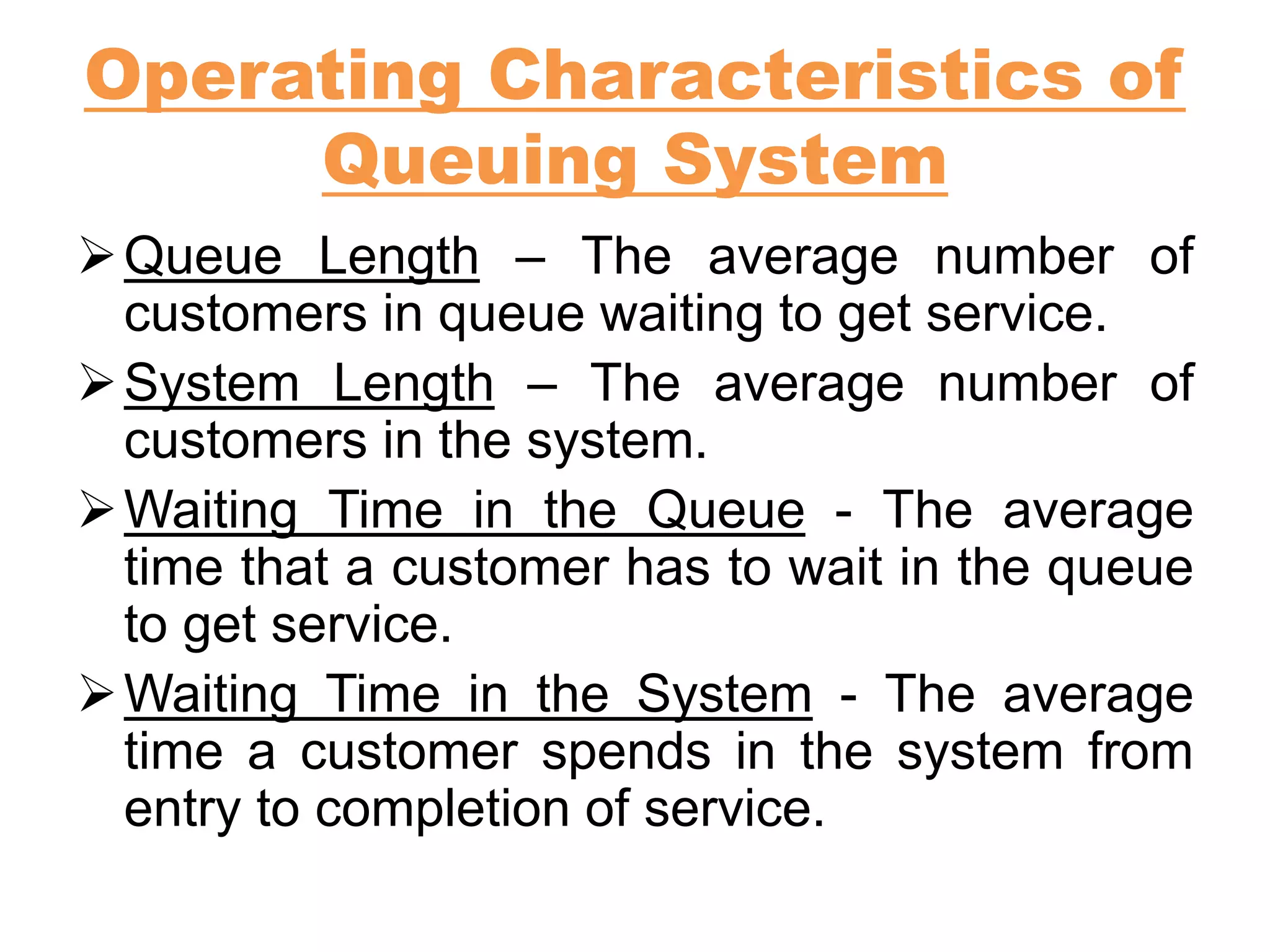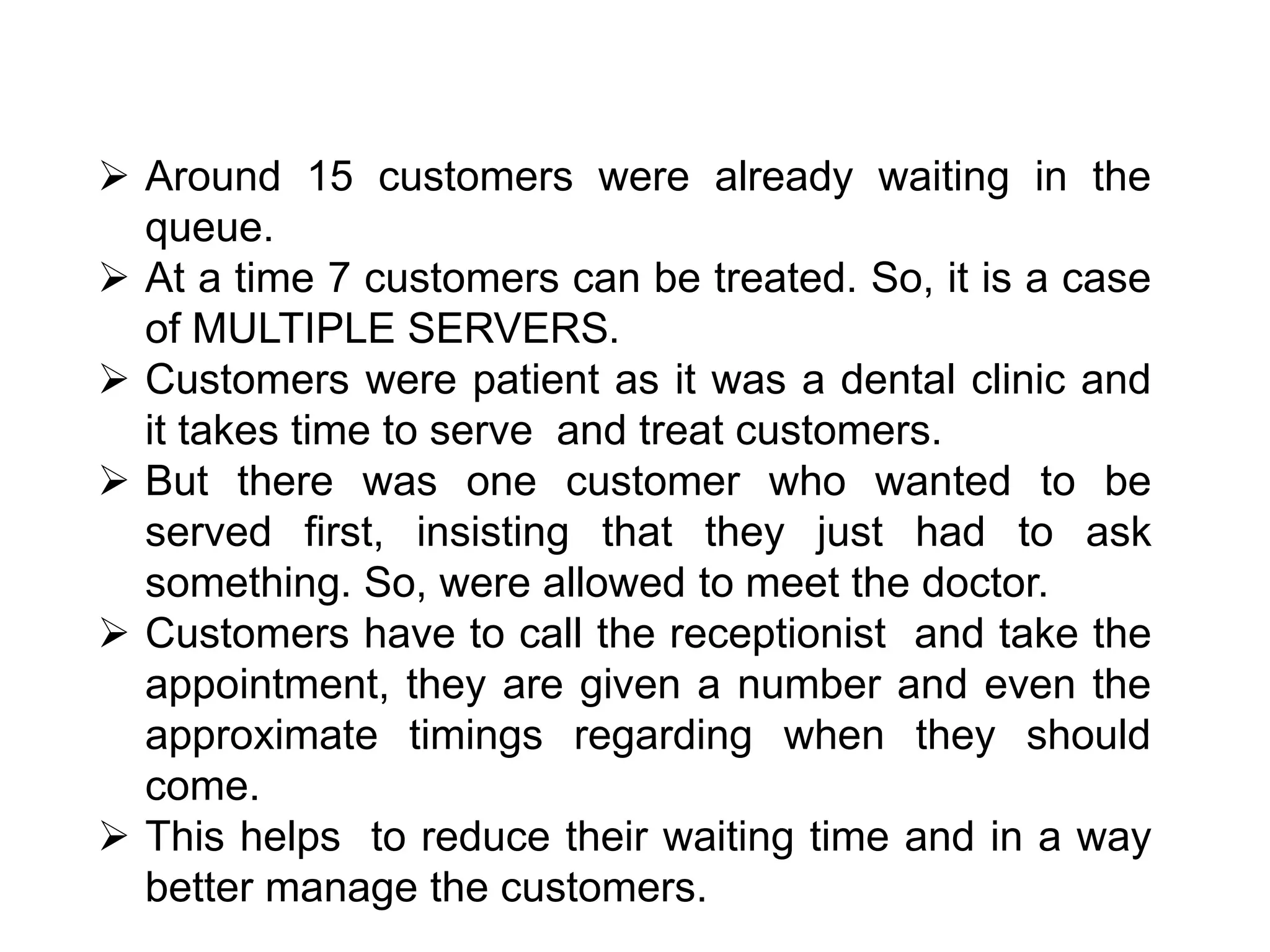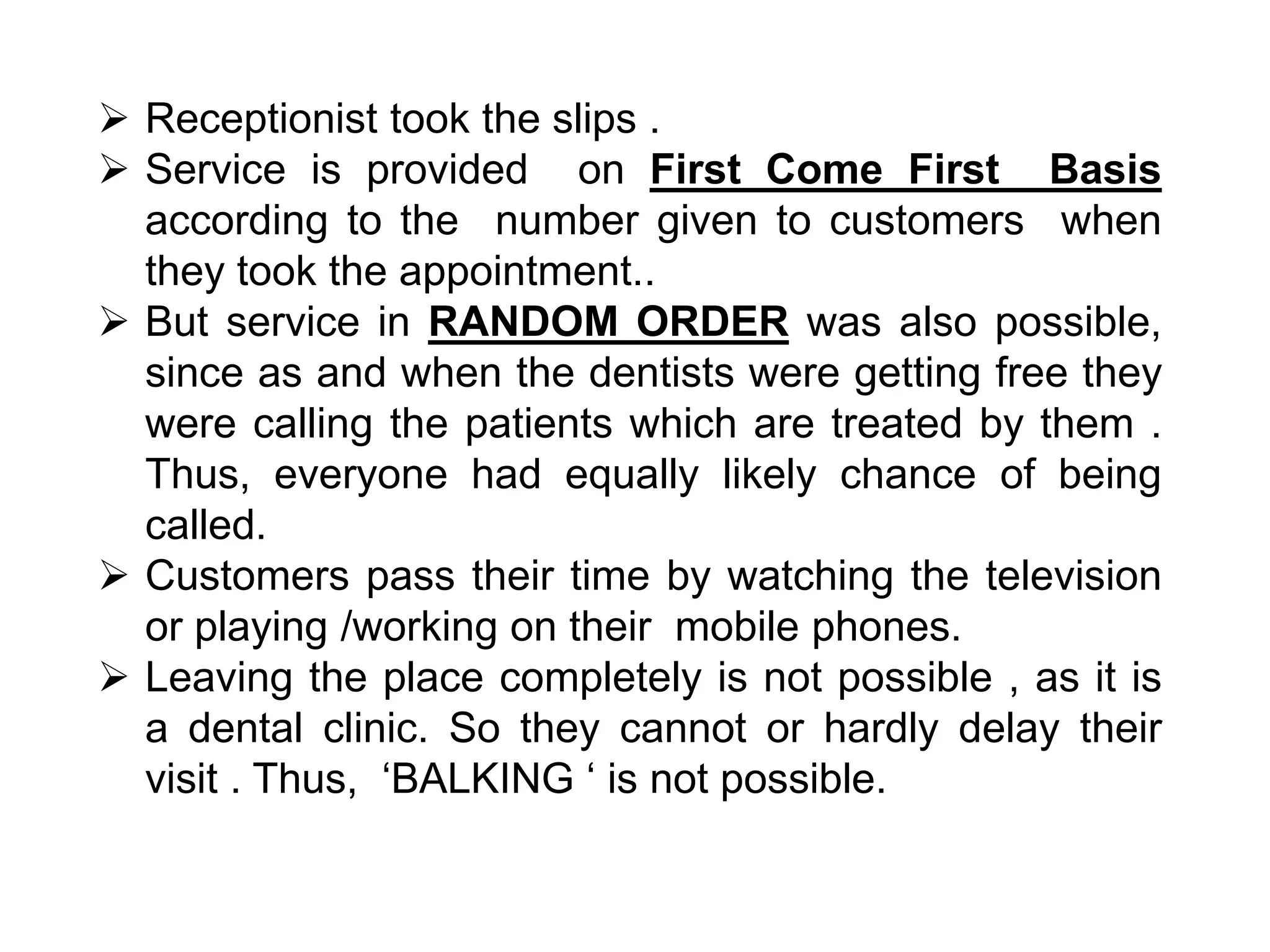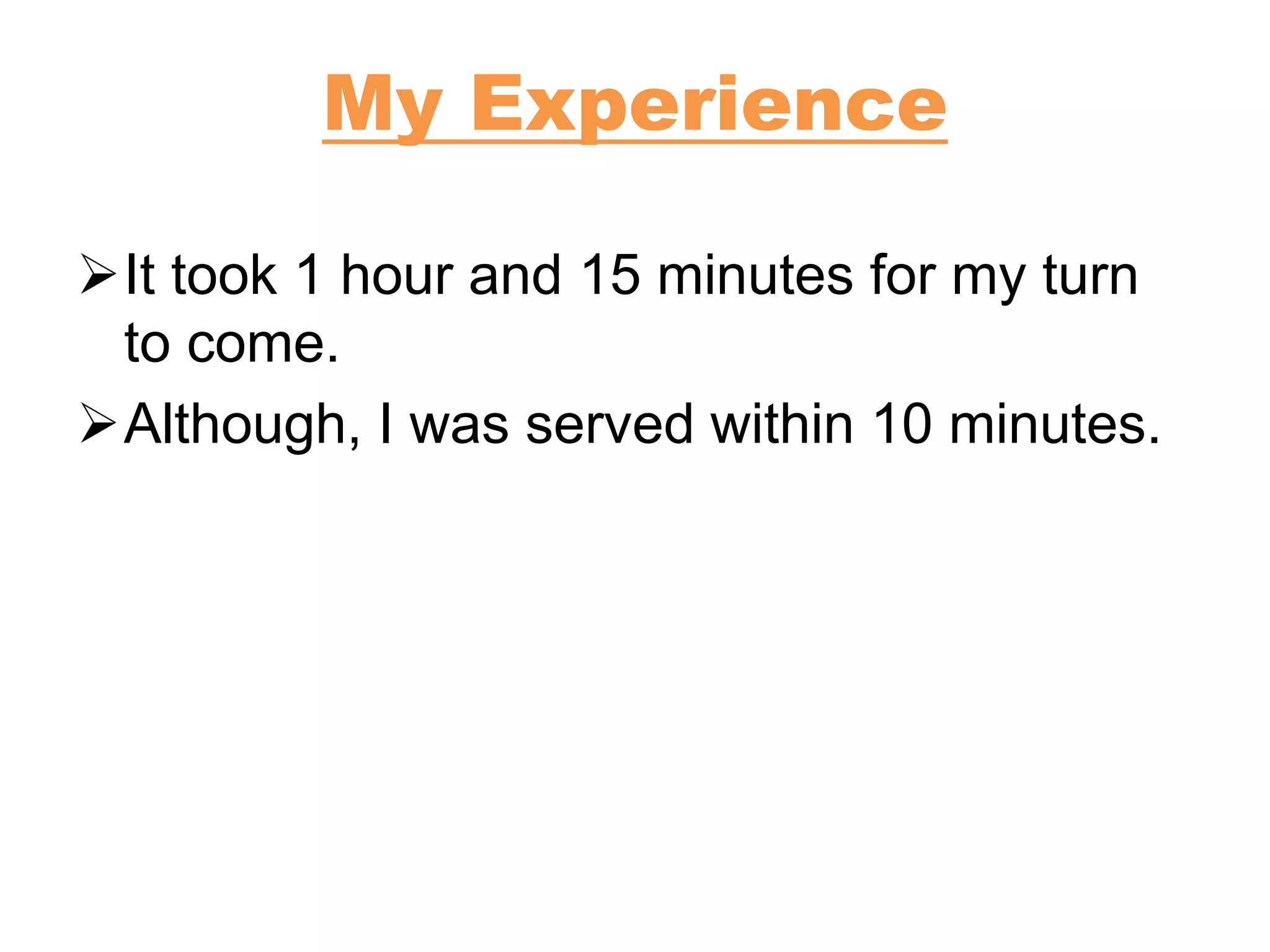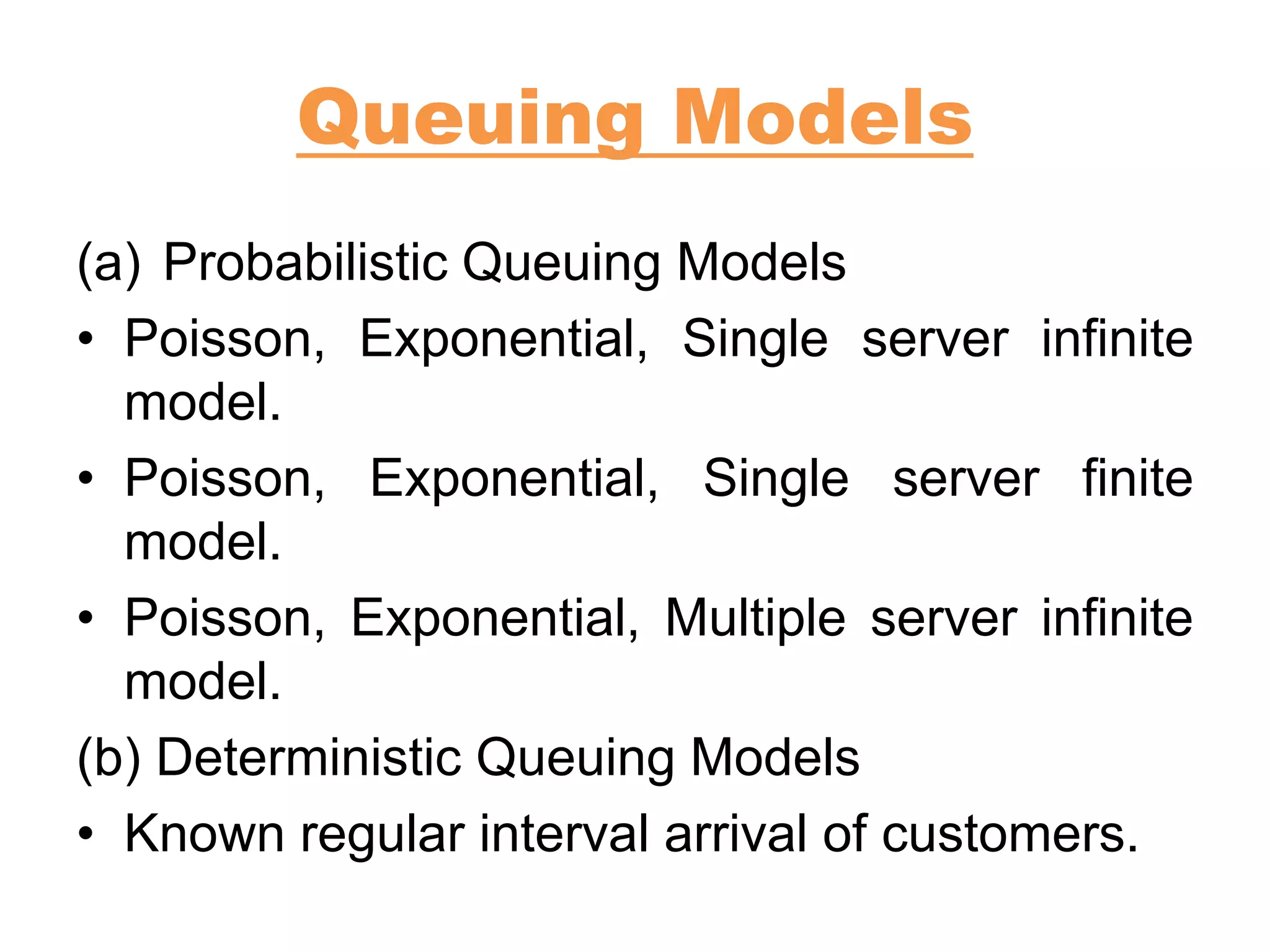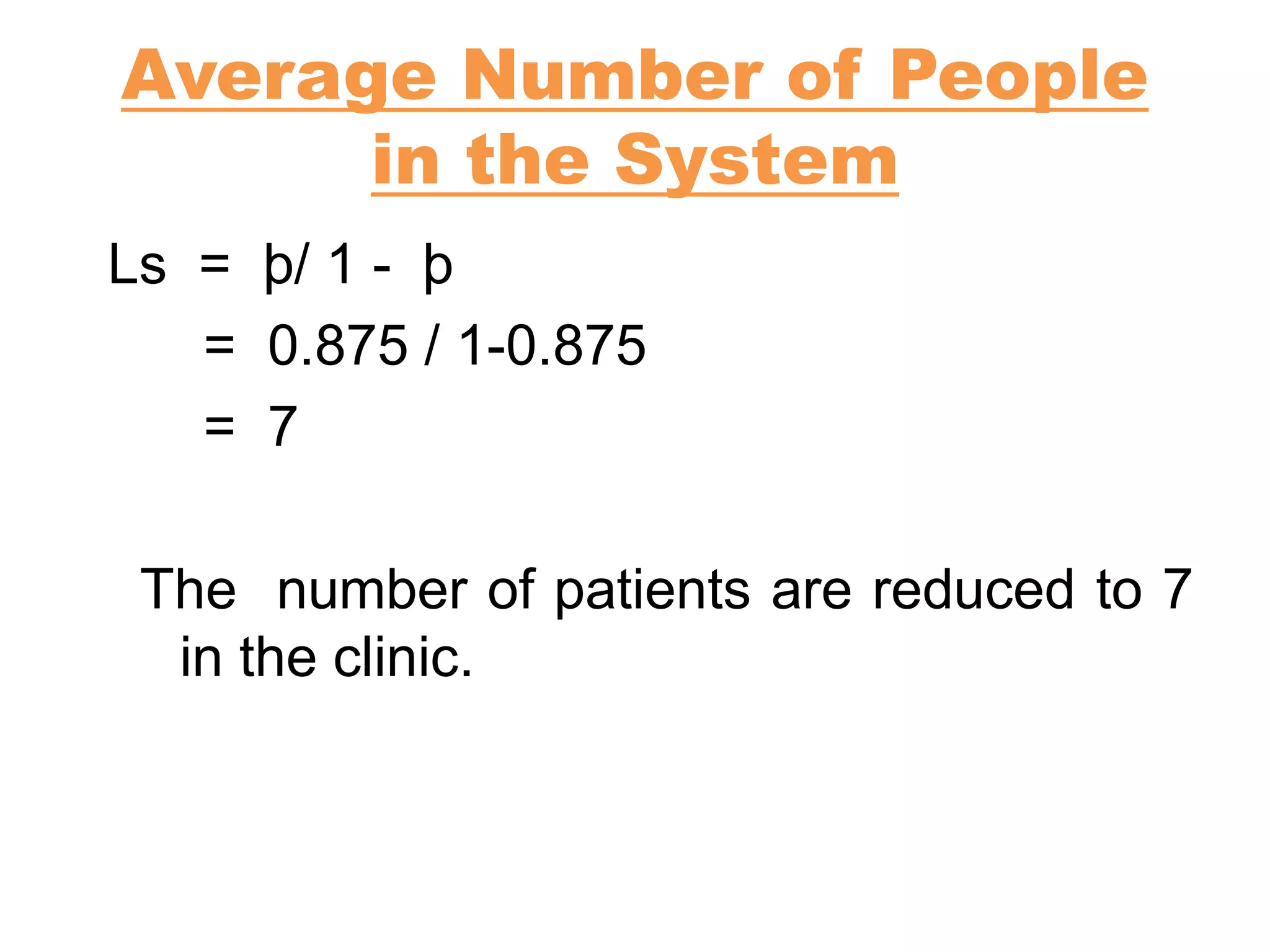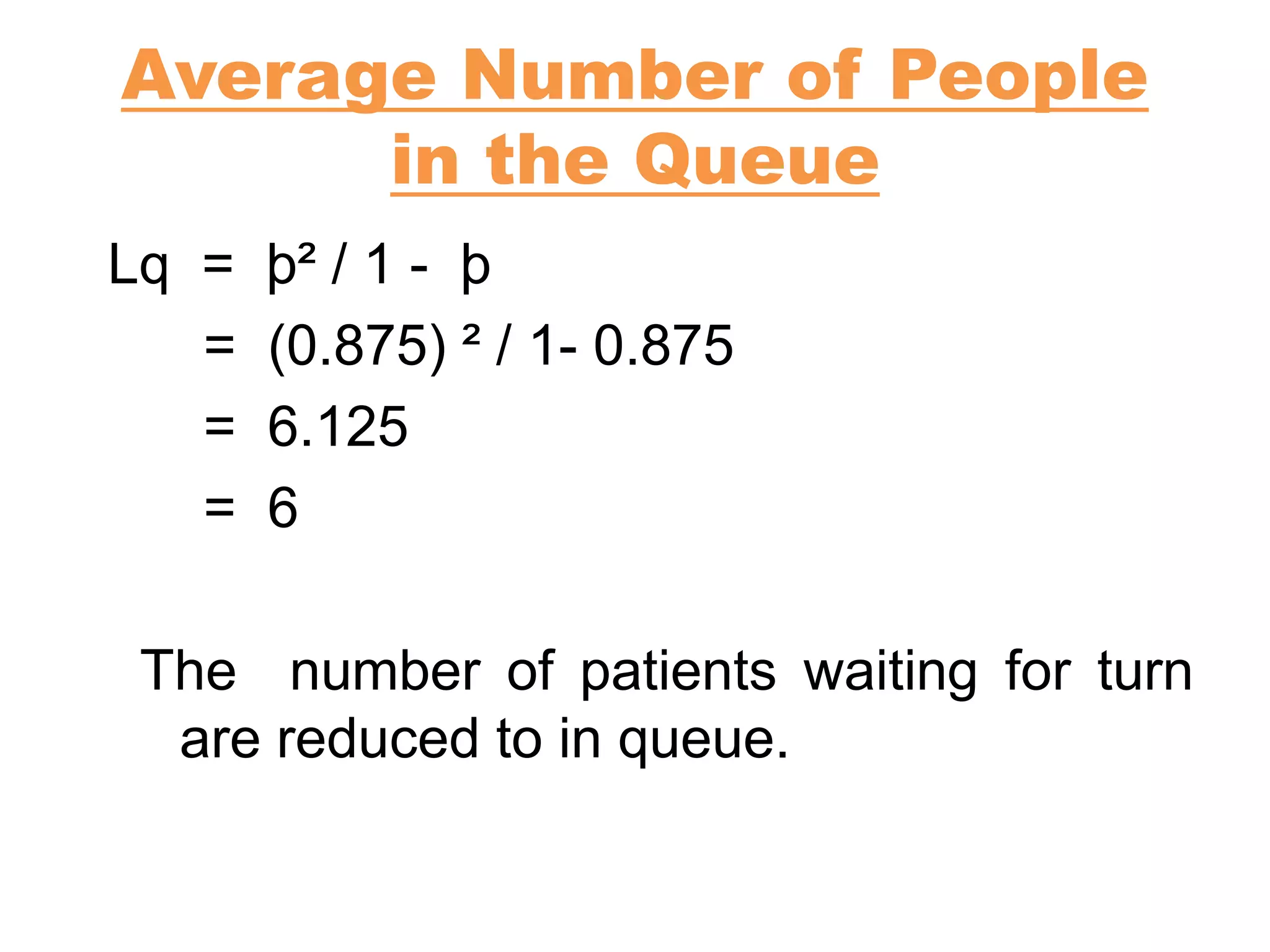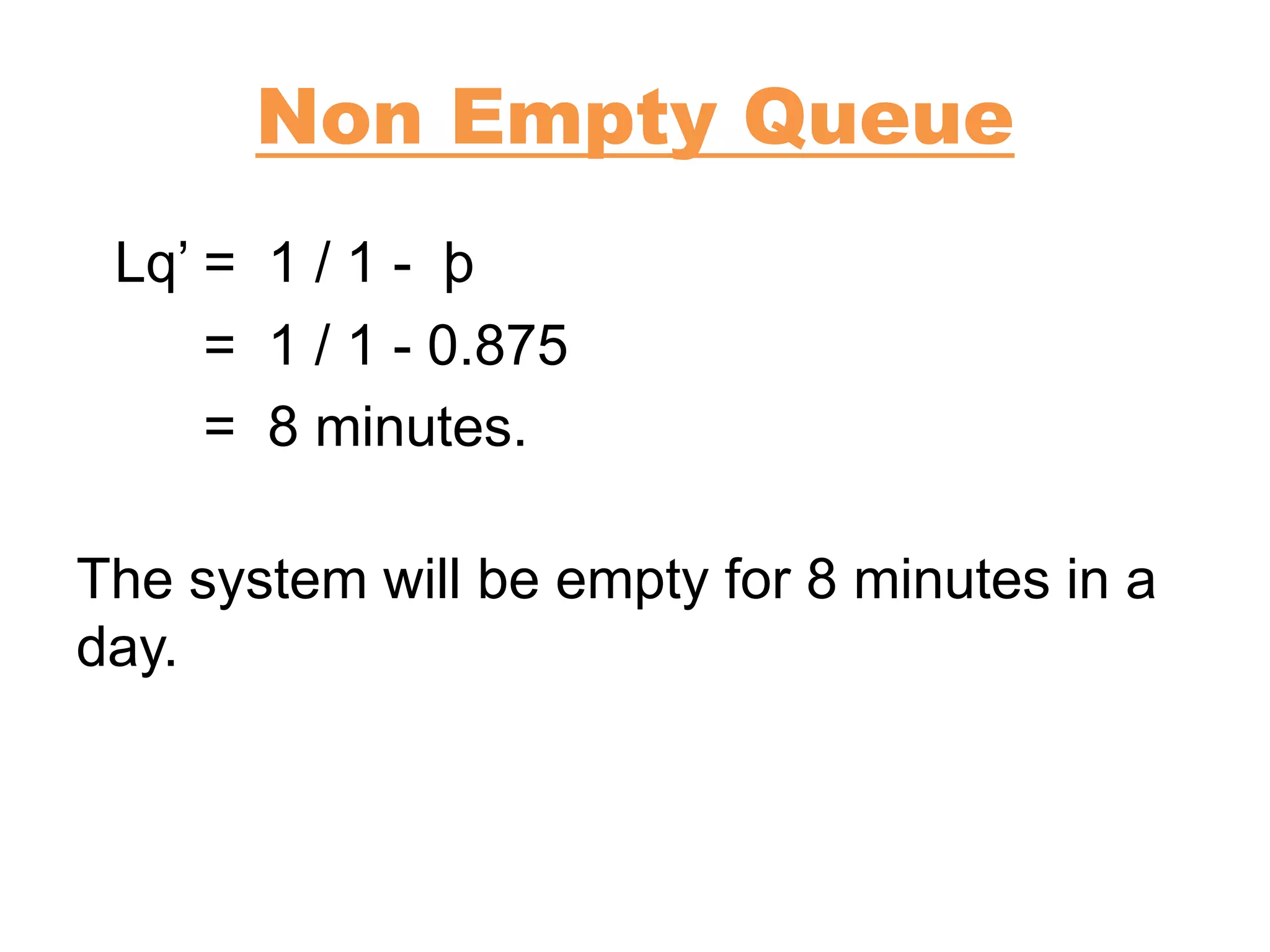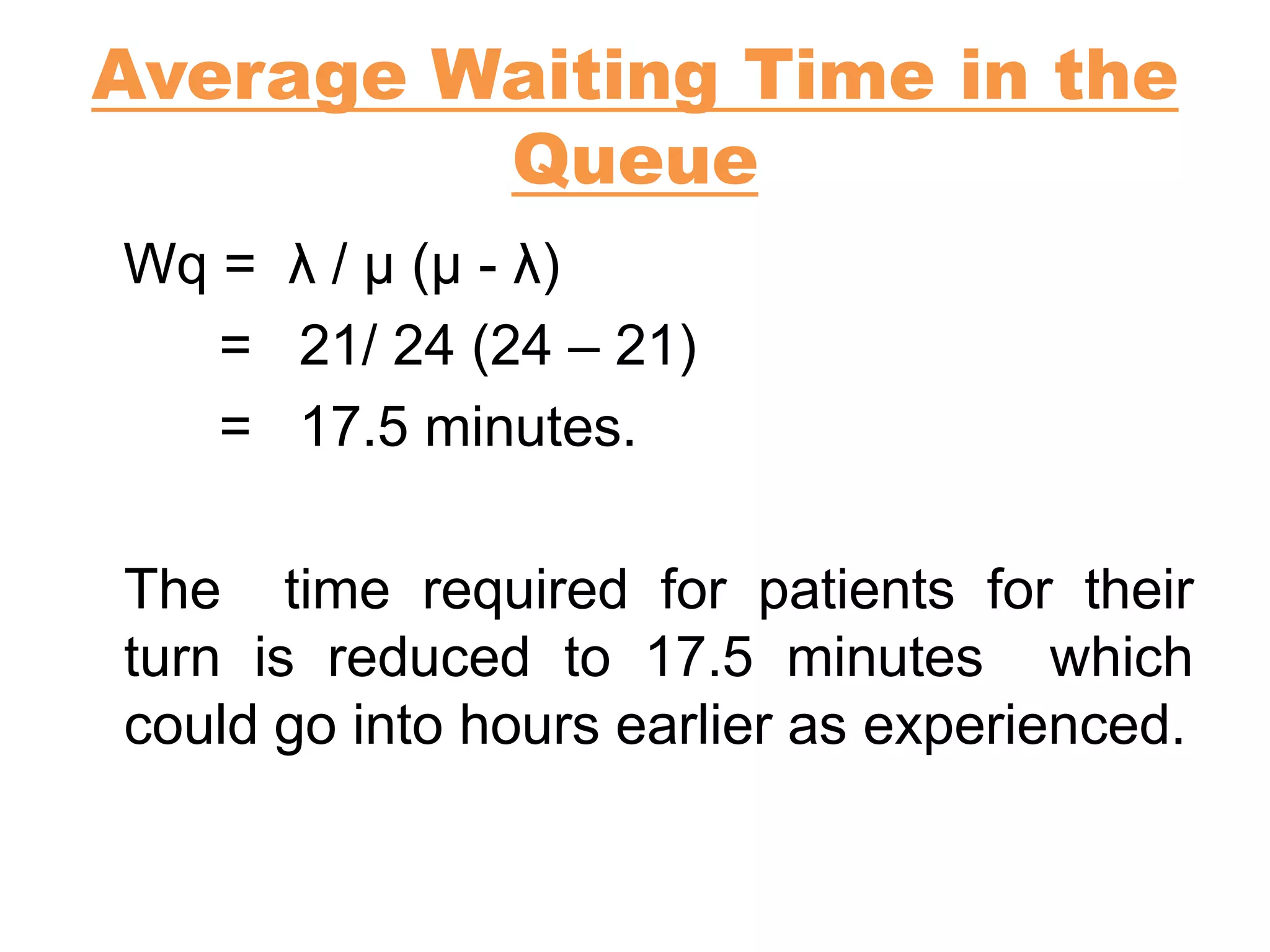The document discusses queuing theory and its application at Rao Dental Clinic. Queuing theory deals with analyzing systems where customers arrive for service and may need to wait in a queue. Observations were made of arrival and service times at the dental clinic. With one server, the utilization rate was too high, leading to long wait times. Adding more servers would reduce wait times by lowering the utilization rate. The document provides calculations to determine expected numbers of customers in the system and queue, as well as average wait times, under different service rates.
